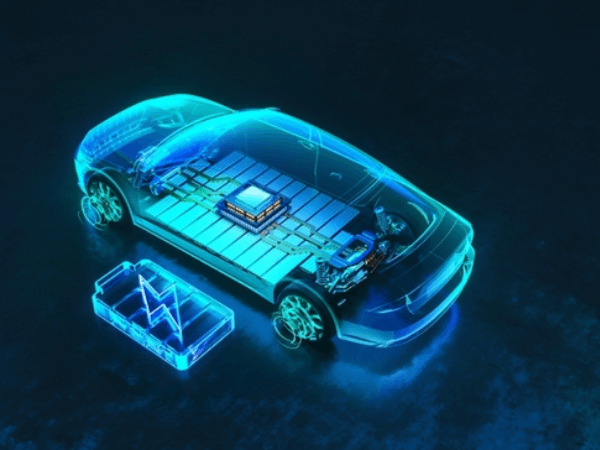Electric Vehicle and Battery Technology Evolution

The evolution of electric vehicles (EVs) and battery technology represents one of the most transformative shifts in the automotive and energy industries. From their inception in the 19th century to their modern dominance as a cleaner alternative to internal combustion engine (ICE) vehicles, EVs have come a long way. Central to this progress is the advancement in battery technology, which has driven innovation, expanded the range of EVs, and made them more accessible and efficient. This article explores the evolution of EVs and the batteries that power them, shedding light on the technological breakthroughs that have defined this exciting journey.
The Early Days of Electric Vehicles
Electric vehicles date back to the 19th century, with some of the first EV prototypes appearing in the 1830s. Early versions were powered by rudimentary batteries that offered limited range and speed. Despite their shortcomings, these vehicles were favored for their quiet operation and lack of harmful emissions compared to steam-powered or gasoline-powered counterparts. By the late 1800s and early 1900s, EVs gained popularity in cities due to their ease of use and suitability for short distances. However, the invention of the electric starter for gasoline engines, along with mass production of affordable ICE vehicles like the Ford Model T, led to the decline of EVs in the early 20th century.
The Resurgence of Electric Vehicles
The mid-20th century saw a renewed interest in EVs due to growing concerns about air pollution and the environmental impact of fossil fuels. During the 1970s oil crisis, governments and automakers began exploring alternatives to gasoline-powered vehicles. Early modern EVs, however, faced significant limitations, including bulky batteries, long charging times, and restricted range. These challenges kept EVs largely confined to niche markets.
By the late 1990s and early 2000s, technological advancements in battery chemistry, government incentives, and rising awareness of climate change sparked a resurgence in the EV market. Automakers began developing more efficient EVs, with notable examples including the Toyota Prius hybrid in 1997 and the Nissan Leaf in 2010, one of the first mass-market all-electric vehicles.
The Role of Battery Technology in EV Evolution
Batteries are the heart of electric vehicles, determining their range, performance, and affordability. The evolution of EVs has been intrinsically linked to advancements in battery technology, transitioning from primitive lead-acid batteries to sophisticated lithium-ion systems.
1. Lead-Acid Batteries
Early EVs relied on lead-acid batteries, known for their low energy density and heavy weight. While affordable and easy to manufacture, these batteries limited the performance and range of EVs. They remain in use today for ancillary systems in modern vehicles, but their role in propulsion has been largely replaced by more advanced technologies.
2. Nickel-Cadmium and Nickel-Metal Hydride Batteries
Nickel-cadmium (NiCd) and nickel-metal hydride (NiMH) batteries represented a significant improvement over lead-acid batteries. NiMH batteries offered higher energy density and durability, making them suitable for early hybrid vehicles like the Toyota Prius. However, their higher cost and limited efficiency compared to newer alternatives eventually phased them out.
3. Lithium-Ion Batteries
Lithium-ion (Li-ion) batteries revolutionized the EV market by offering high energy density, lighter weight, and faster charging capabilities. First introduced in consumer electronics in the 1990s, Li-ion batteries quickly became the standard for EVs due to their superior performance. Tesla’s launch of the Roadster in 2008 showcased the potential of Li-ion batteries, offering a range of over 200 miles on a single charge and cementing EVs as a viable alternative to ICE vehicles.
Advancements Driving the Battery Evolution
1. Energy Density Improvements
One of the key challenges for EV batteries has been increasing their energy density, or the amount of energy stored per unit weight. Modern Li-ion batteries have achieved significant improvements in energy density, enabling longer ranges without increasing battery size or weight.
2. Cost Reductions
High battery costs were a major barrier to EV adoption. Advances in manufacturing techniques, economies of scale, and material innovations have driven down the cost of Li-ion batteries from over $1,000 per kWh in 2010 to less than $150 per kWh today, making EVs more affordable for consumers.
3. Charging Technology
Charging infrastructure and technology have advanced alongside battery evolution. Fast-charging networks now allow EVs to recharge up to 80% of their capacity in under 30 minutes. Wireless and bidirectional charging technologies are also emerging, enhancing convenience and grid stability.
4. Solid-State Batteries
Solid-state batteries represent the next frontier in battery technology. These batteries replace the liquid electrolyte in traditional Li-ion batteries with a solid material, offering higher energy density, improved safety, and longer lifespans. Companies like Toyota and QuantumScape are actively developing solid-state batteries, with commercialization expected in the coming years.
5. Sustainability and Recycling
The environmental impact of mining and disposing of battery materials is a growing concern. Research into sustainable materials, such as silicon anodes and cobalt-free cathodes, is reducing the ecological footprint of battery production. Recycling initiatives aim to recover valuable materials like lithium and nickel, creating a circular economy for EV batteries.
The Rise of EV Adoption
Government incentives, stricter emissions regulations, and growing consumer demand have fueled the widespread adoption of EVs. Countries like Norway, Germany, and China have implemented policies to phase out ICE vehicles and promote electric mobility. Automakers, including legacy brands like General Motors, Ford, and Volkswagen, alongside EV pioneers like Tesla, are committing to electrification, investing billions in new models and production facilities.
Future Trends in EV and Battery Technology
The future of EVs and battery technology is marked by continuous innovation and expansion. Ultra-fast charging, wireless energy transfer, and battery-as-a-service models are poised to enhance convenience and affordability. Research into alternative chemistries, such as sodium-ion and lithium-sulfur batteries, could further improve performance and sustainability. Autonomous electric vehicles and integration with smart grids will redefine transportation, creating energy-efficient ecosystems.
Conclusion
The evolution of electric vehicles and battery technology showcases humanity’s commitment to innovation and sustainability. From early experiments with lead-acid batteries to the groundbreaking development of lithium-ion and solid-state systems, the journey has been one of relentless progress. As technology continues to advance, EVs are no longer just a vision of the future but a cornerstone of modern transportation. Their continued development promises cleaner air, reduced reliance on fossil fuels, and a more sustainable planet for generations to come.





